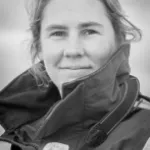Calanus comprise up to 90% of zooplankton biomass in Arctic Ocean. They are central to Arctic food webs, linking phytoplankton to fish and higher predators. They also transport vast quantities of carbon into the deep ocean via the Calanus “lipid pump”.
How does change in the Arctic Ocean alter the availability of this key Arctic food source?
How does this influence the cycling of carbon in the Arctic?
A key aim is to develop a predictive understanding of how Calanus will be affected by climate change. This will allow us to explore the future impact on productivity and biogeochemistry in the Arctic Ocean.
DIAPOD





